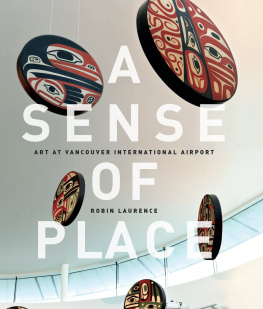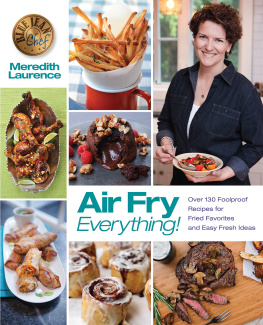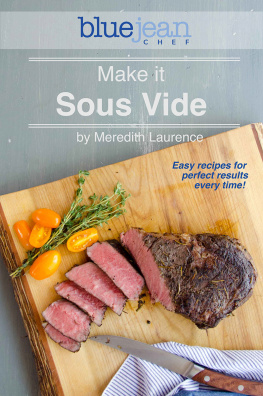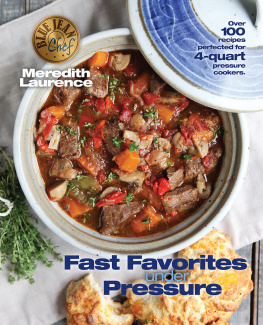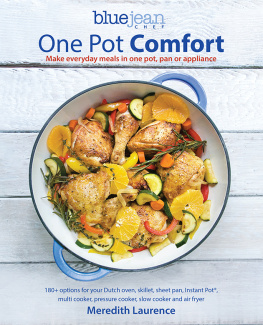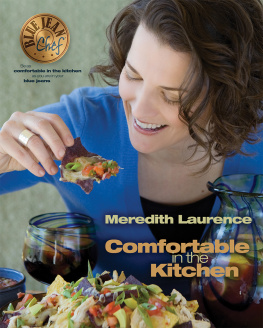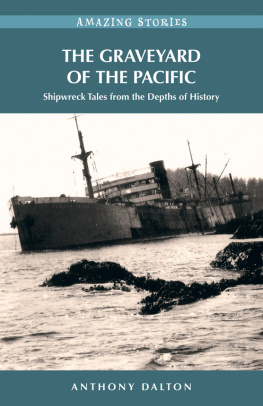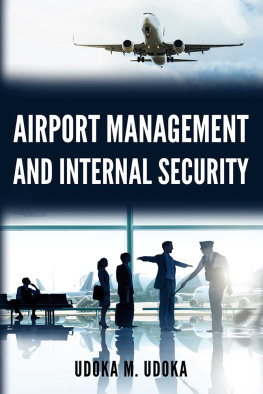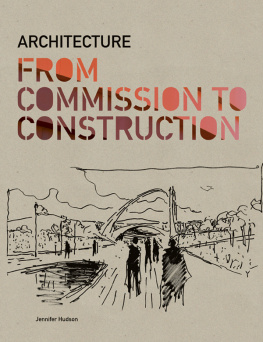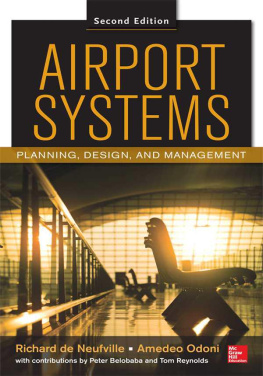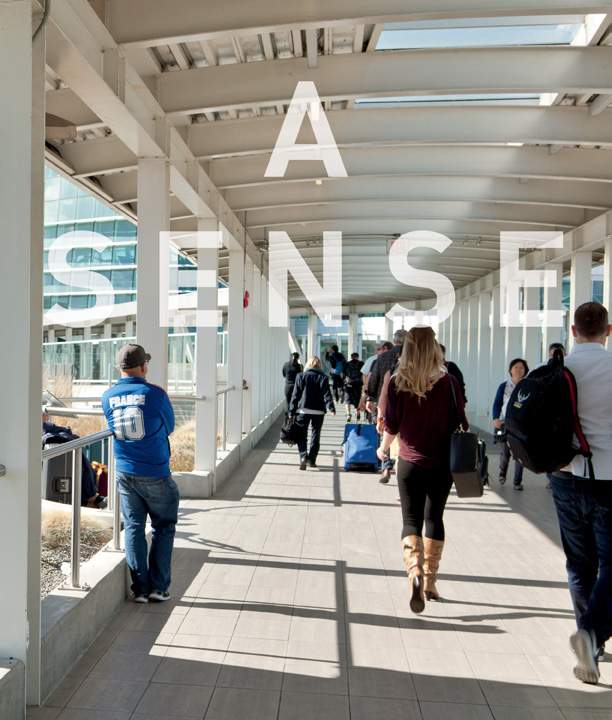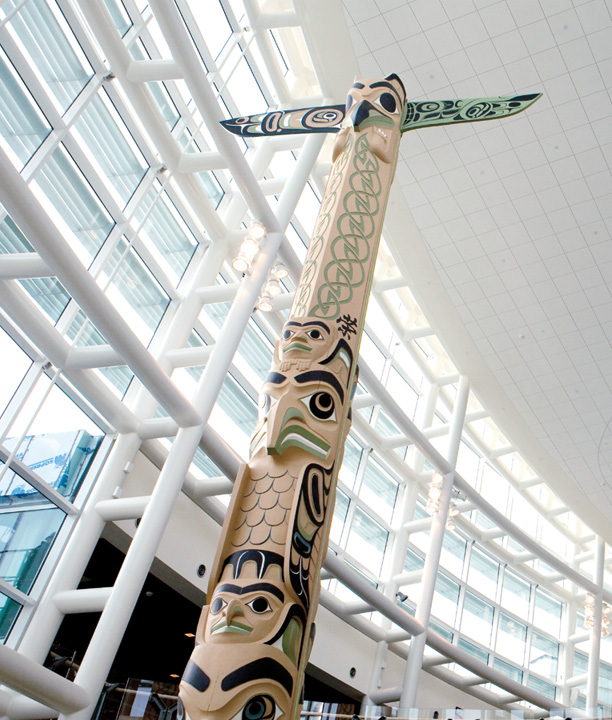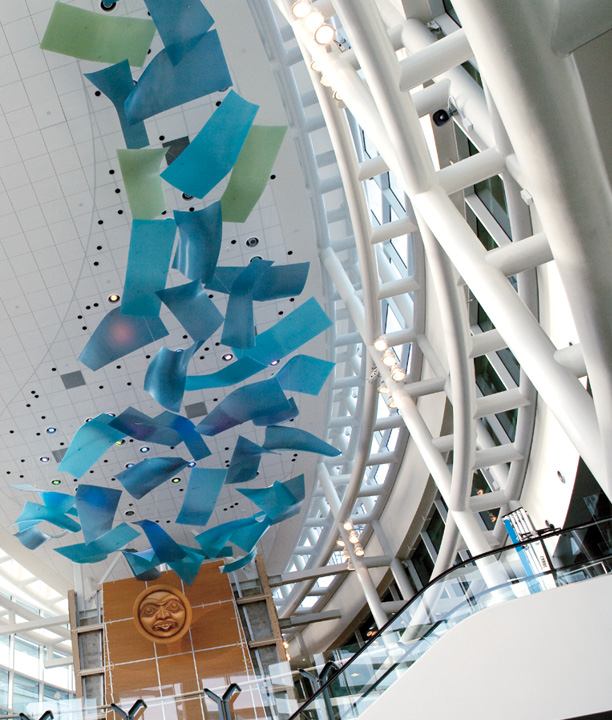INTRODUCTION
As travellers from abroad arrive at Vancouver International Airport ( YVR ) and enter the International Terminal, they experience a powerful and unique welcome. Having passed long walls of glass framing views of ocean, mountains and deep green forest, they encounter a high view of Canada Customs Hall from a large and beautiful landing. The landing serves as a kind of stage, where distinctive cultural and natural elements enact a drama of place. Here, water cascades down a vertical rock face behind an enormous wooden sculpture. Carved in red cedar by leading Musqueam artist Susan Point, the sculpture is based on the shape of a traditional Coast Salish spindle whorl. It depicts stylized eagles, salmon and human figures, all caught up in a current of swirling movement and gesture and representing the intertwined themes of flight, welcome and cultural identity. Orbs realized in both positive and negative space symbolize the sun, the moon and the planet Earth, and the circular shape of the spindle whorl itself suggests the great encompassing cosmos.
Beyond this work, four richly hued weavings hang like celebratory banners in space, incorporating the patterns and designs of traditional Coast Salish blankets. Created by Debra Sparrow, Robyn Sparrow, Krista Point, Gina Grant and Helen Callbreath, they represent an honoured and ancient craft practiced by the First Nations women of the region. Past the spindle whorl and the weavings, down a set of stairs and escalators separated by rushing streams of water, two large wooden welcome figures, male and female, also carved by Point, extend their greetings to all who pass by. Even on overcast days, light floods the high-ceilinged hall, contributing to the sense of wonder and delight.
The Musqueam Welcome Area at the entrance to Canada Customs Hall is a dramatic example of YVR s thematically linked art, architecture and interior design, and their integration into an overarching theme of land, sea and sky. It also and more importantly conveys a powerful sense of place, communicating elements of the natural environment and aboriginal cultures of British Columbia and making the airport distinctive, enjoyable and memorable within the global network of aviation hubs. The sculptures and weavings on view are representative of YVR s groundbreaking art program, which, in concert with its architectural design, has captivated millions of travellers who pass through the airport each year, garnered numerous awards, inspired wide media coverage and served as a model to other airports around the world.
In the late 1980s, while YVR was still being managed by Transport Canada, modest efforts were made to enliven the facility through the display of contemporary aboriginal art from British Columbia. However, the commissioning and display of such art had yet to become a priority at what was considered a very functional and in some ways undersized airport. Things changed dramatically in 1992 when Vancouver Airport Authority took over the management of YVR and plans were made for an ambitious and visually arresting expansion and renovation of the passenger terminals. At that time, a commitment was made to direct up to one percent of building capital expenditures to the commissioning of art for placement throughout YVR , and to fully consolidating these works with the overall architectural plan.
The mission statement for art and architecture in the newly expanded airport called for the celebration of the natural beauty and cultural heritage of British Columbia. Both could be used to tell the story of this place to convey to visitors the unique character of the province the airport serves. Essential to YVR s vision was and is the presentation of outstanding works from figurative sculptures, silkscreen prints and copper panels to transformation masks, ceremonial paddles and totem poles by contemporary First Nations artists from British Columbia. The YVR Art Foundation was established in 1993. This charitable organization fosters the development of B.C. First Nations art and artists through scholarships and other programs. As a further commitment to YVR s art program, a curator was hired to oversee the growing collection, which now numbers over two hundred works and is one of the most significant of its kind in the world.
In the mid-1990s, the creation of the Musqueam Welcome Area and the purchase and installation of Bill Reids acclaimed bronze sculpture The Spirit of Haida Gwaii: The Jade Canoe dramatically launched YVR s comprehensive art program. The additions powerfully identified the airport with the most distinctive visual art created in British Columbia. But who are the people whose cultural presence has contributed so much to the story of this place?
Isolated by mountains, forests and long, wet winters on the narrow, broken margin of the sea, the first peoples of the North Pacific Coast of North America evolved, over many thousands of years, sophisticated fishing, hunting and gathering technologies and complex systems of religious belief, social structure and economic exchange. They also developed a distinctive material culture, with a monumental scale and wealth of expression that were unmatched in Native America anywhere north of pre-Columbian Mexico. The abundance of food sources on the Northwest Coast (most pivotally, the annual salmon runs) allowed for a seasonal division of the year. Summers were spent accumulating and processing food. In the winter, they planned and performed social and religious rituals, using the art that they produced for the ceremony. Towering and abundant evergreens, such as red cedar, provided the basic material for much of the art and all of the architecture.
The nature-based mythology at the heart of Northwest Coast First Nations culture explains the making of the world and its inhabitants, and recounts ways in which distant ancestors garnered special privileges through encounters with supernatural animals and beings. These privileges, including dances, songs, masks, stories and the right to display crest images, were and are regarded as private property. Fiercely guarded, they have been passed from generation to generation through properly observed public rituals such as the feasting and gift-giving events known as potlatches. The art of the Northwest Coast makes visible complex social orders, records important family histories and describes the individuals place within the cosmos. The best known of the areas art forms are carved and painted totem poles, internationally esteemed for their impressive scale, technical accomplishment and visual impact. (The term totem pole is a misnomer, since the figures represented are more heraldic than totemic; however, it is so widely used that it has become established and accepted.) Carved in cedar, they vary in form, content and function, and include memorial poles, house frontal poles, interior house posts and mortuary poles.

